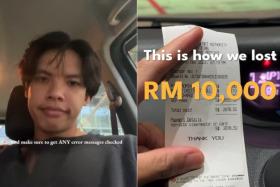LTA, URA release land reserved for Surs
Singapore Underground Road System scrapped as S'pore goes car-lite
More than 20 years after they were first announced, Singapore's plans for a 30km underground road network have been scrapped, freeing up pockets of land previously reserved for the infrastructure.
The Land Transport Authority (LTA) said 295 properties - of which 257 are privately owned - sit on land previously reserved for the project dubbed the Singapore Underground Road System (Surs).
"As Singapore shifts towards a car-lite society, land previously safeguarded for Surs will be de-safeguarded with effect from today," the LTA and Urban Redevelopment Authority (URA) said yesterday.
Surs was conceptualised in the 1980s as an underground ring road system around the city's fringe to cater to potential traffic growth in and out of the city centre.
In 1993, land along the Surs alignment was safeguarded, which meant no development could take place there.
"Enhancements to our public transport network and changes in land use policies have removed the need for Surs," the joint statement added.
"The city centre is well served by a comprehensive public transport network."
With the underground road network no longer needed, land safeguarded for it can now be released for redevelopment.
Land owners who were previously affected will now have greater flexibility in their development plans.
The city centre is well served by a comprehensive public transport network.Joint statement from LTA and URA
The Straits Times understands the land owners are a mix of private and public entities.
Likely plots include prime spots in Balestier, Bendemeer, Newton, Orchard, Havelock, Outram and Marina Bay.
Although official figures were not readily available, it appears that a sizeable amount of land will be available for redevelopment.
This, in turn, could translate into valuable real estate potentially coming into the market, although analysts said it was difficult to estimate the impact of the move without knowing the size of the land that could become available.
The underground road network was previously seen as a way for Singapore to move traffic underground so as to preserve more surface space for other uses.
The Marina Coastal Expressway was one example of how the Government had moved traffic below ground to free up a large parcel of prime land for redevelopment.
As recently as 2013, the LTA said in its masterplan that it was studying an underground road network that links the Central Business District, Marina Bay and the future southern waterfront district after 2030.
Cities such as Brussels, Stockholm, Madrid and Paris have factored in such roads in their city plans.
Although an underground road takes up less space than a surface road, provisions need to be made for entry-exit ramps and ventilation facilities.
Surs would have needed 33 entry-exit ramps.
Retired traffic planner Joseph Yee was not surprised Surs had been scrapped.
He said: "Its implementation date was never fixed. The priority now is public transport."
He added that Surs would also be "too expensive" to build and operate.
Said Mr Yee: "As far as I recall, it is the only system the LTA studied that has not been implemented."
FOR MORE, READ THE STRAITS TIMES TODAY
Get The New Paper on your phone with the free TNP app. Download from the Apple App Store or Google Play Store now


